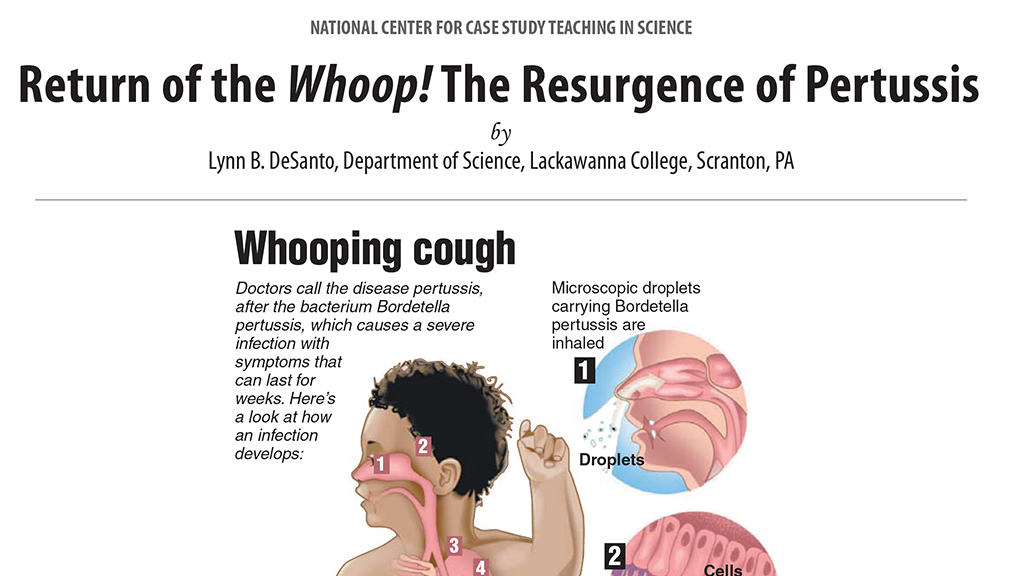Abstract
This interrupted case study outlines the history of pertussis or whooping cough, a disease that in the early 1900s claimed the lives of more people than diphtheria, scarlet fever, and measles combined. Whooping cough continued to afflict and kill a large number of children until well into the 1930s when Pearl Kendrick and Grace Eldering developed a vaccine that by the 1960s reduced the rate of incidence to 5% of what it was in 1934. But the disease was not eradicated, and by 2013 the number of cases was triple the number of the 1980s. Why the resurgence? To answer that question, students will begin by learning about the biochemical and pathogenic effects of the causative agent, Bordetella pertussis. They will then differentiate the original cellular vaccine from the present day acellular version and consider the cultural, economic and epidemiological effects of making the switch. Originally developed for a microbiology course, this case could also be adapted for a general biology or epidemiology course.


